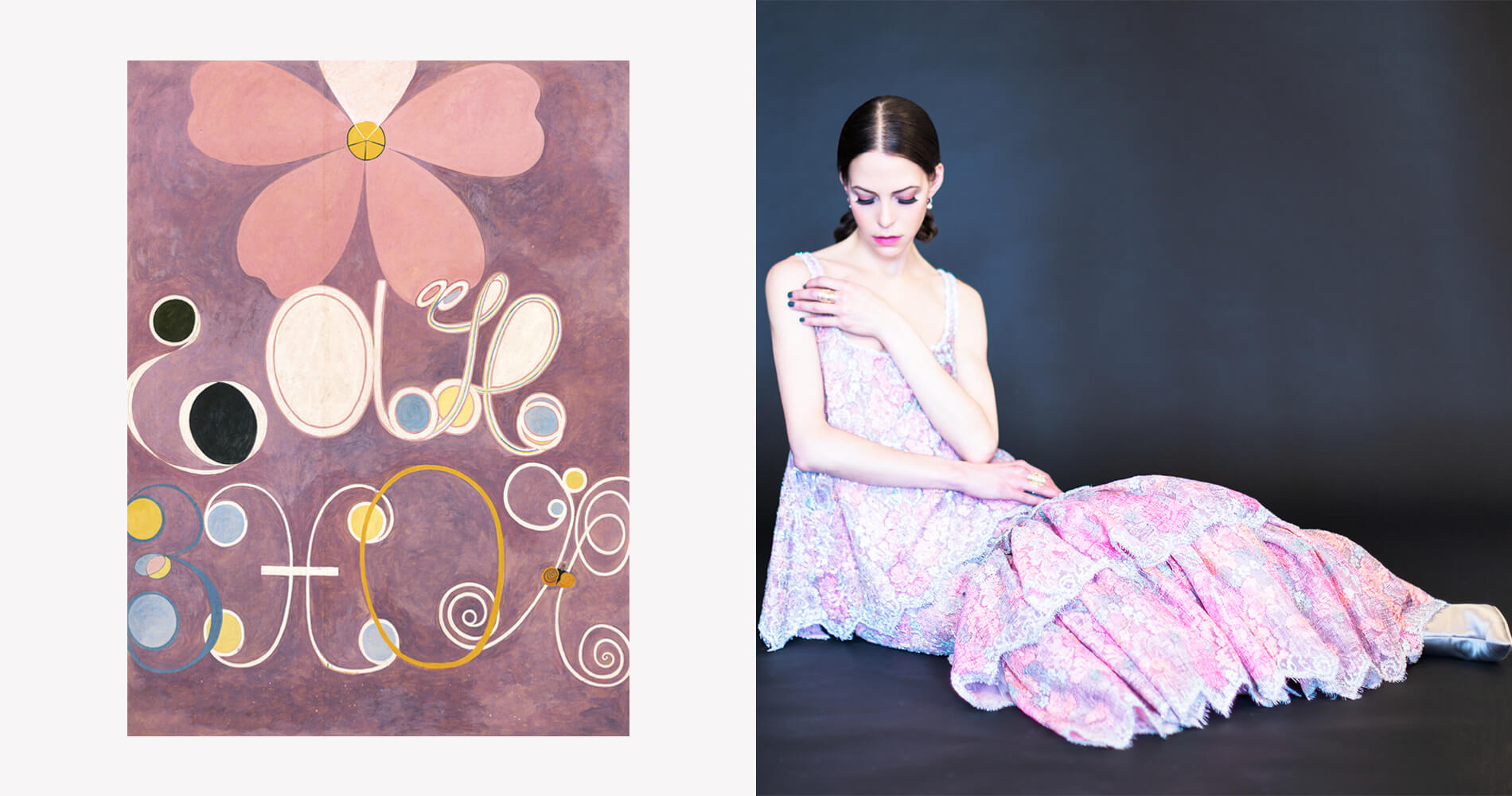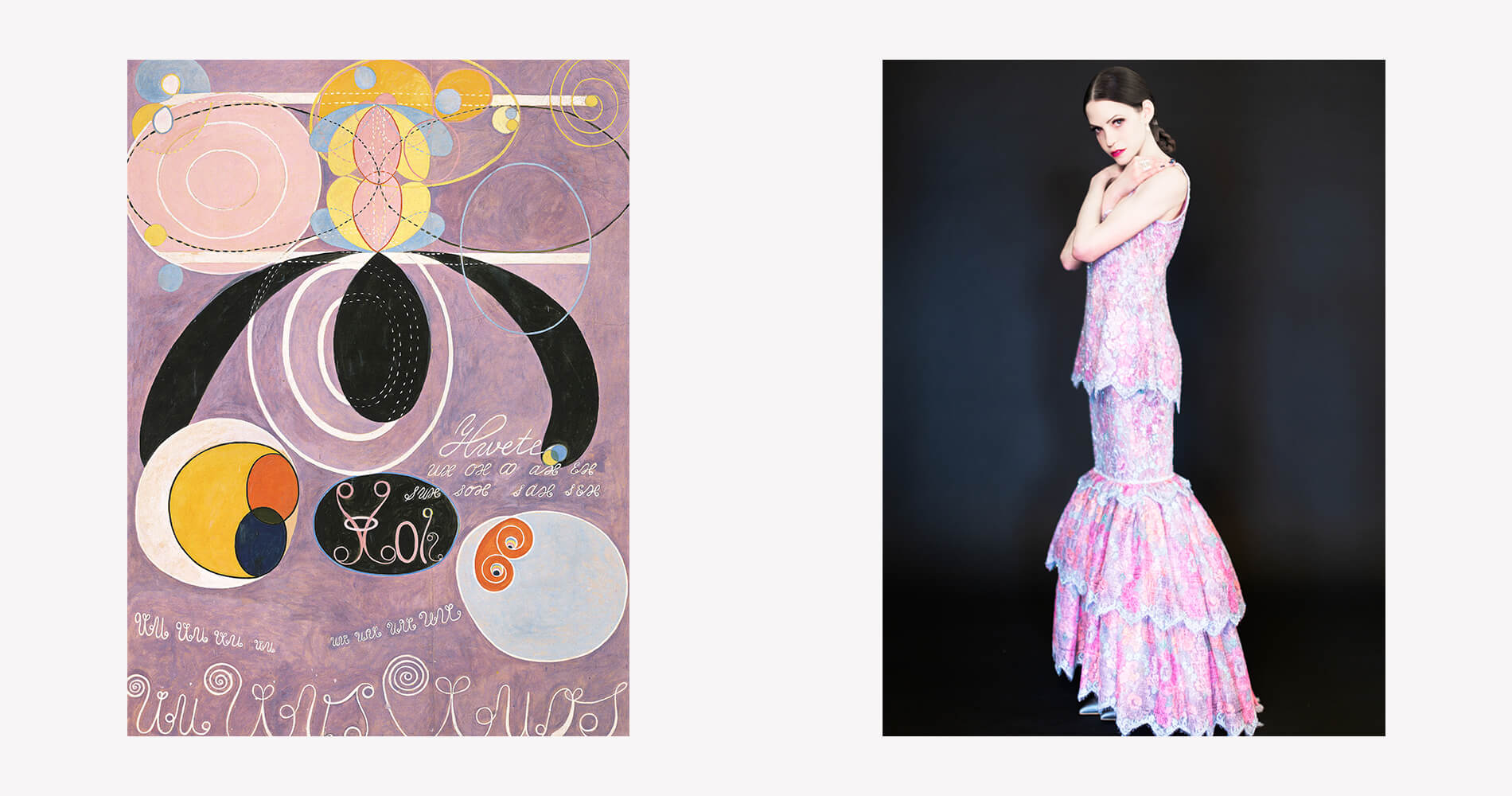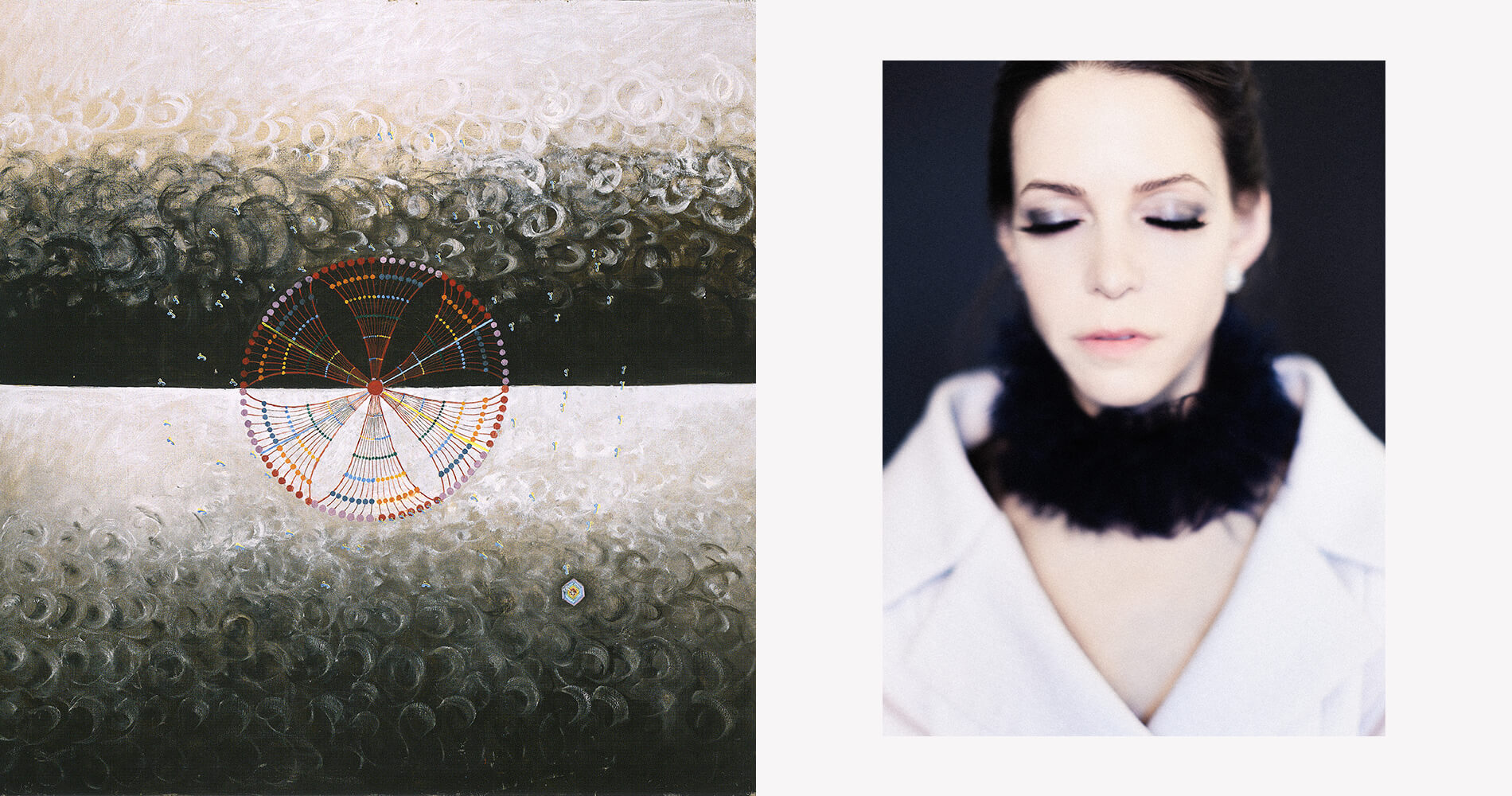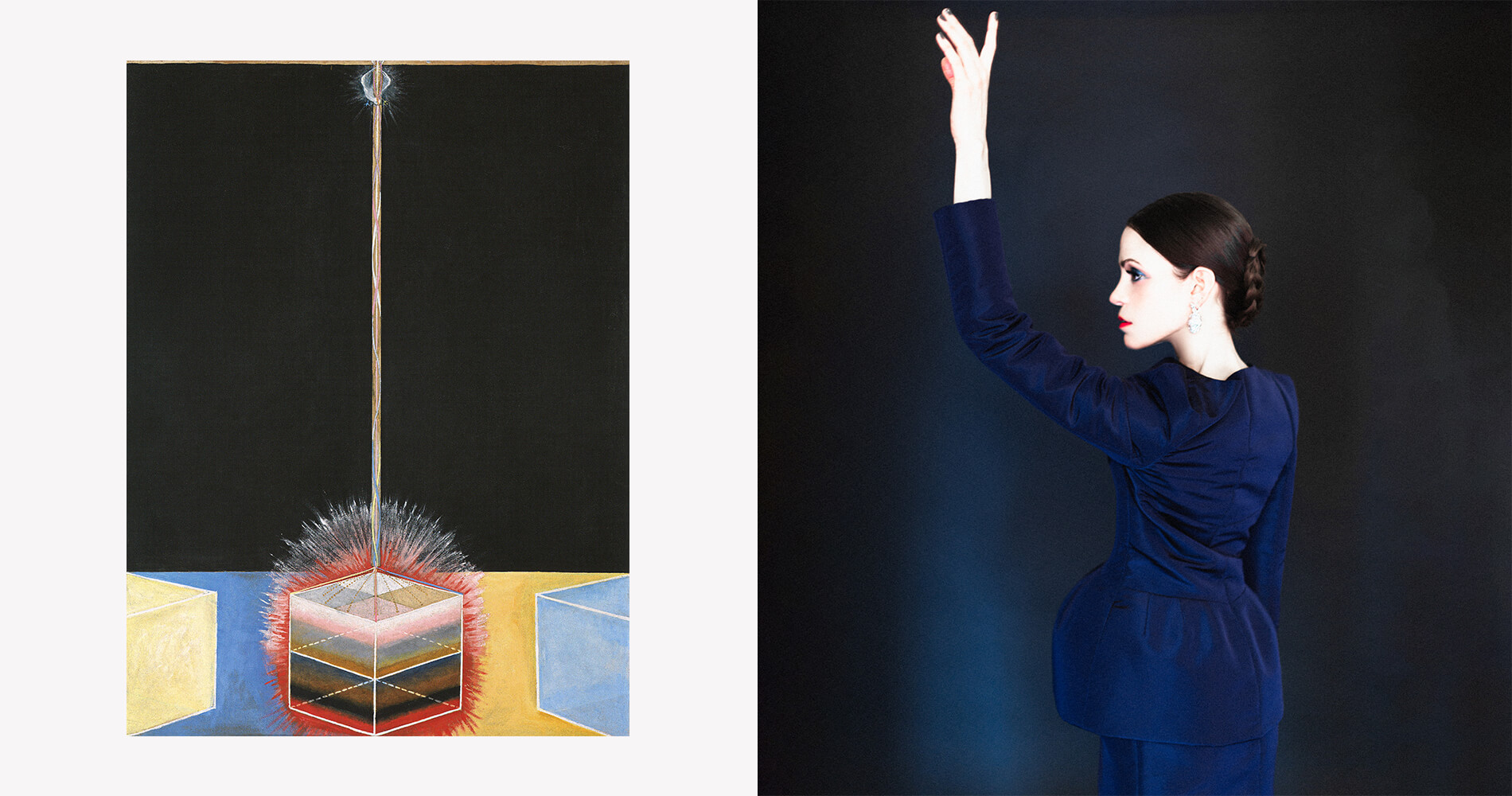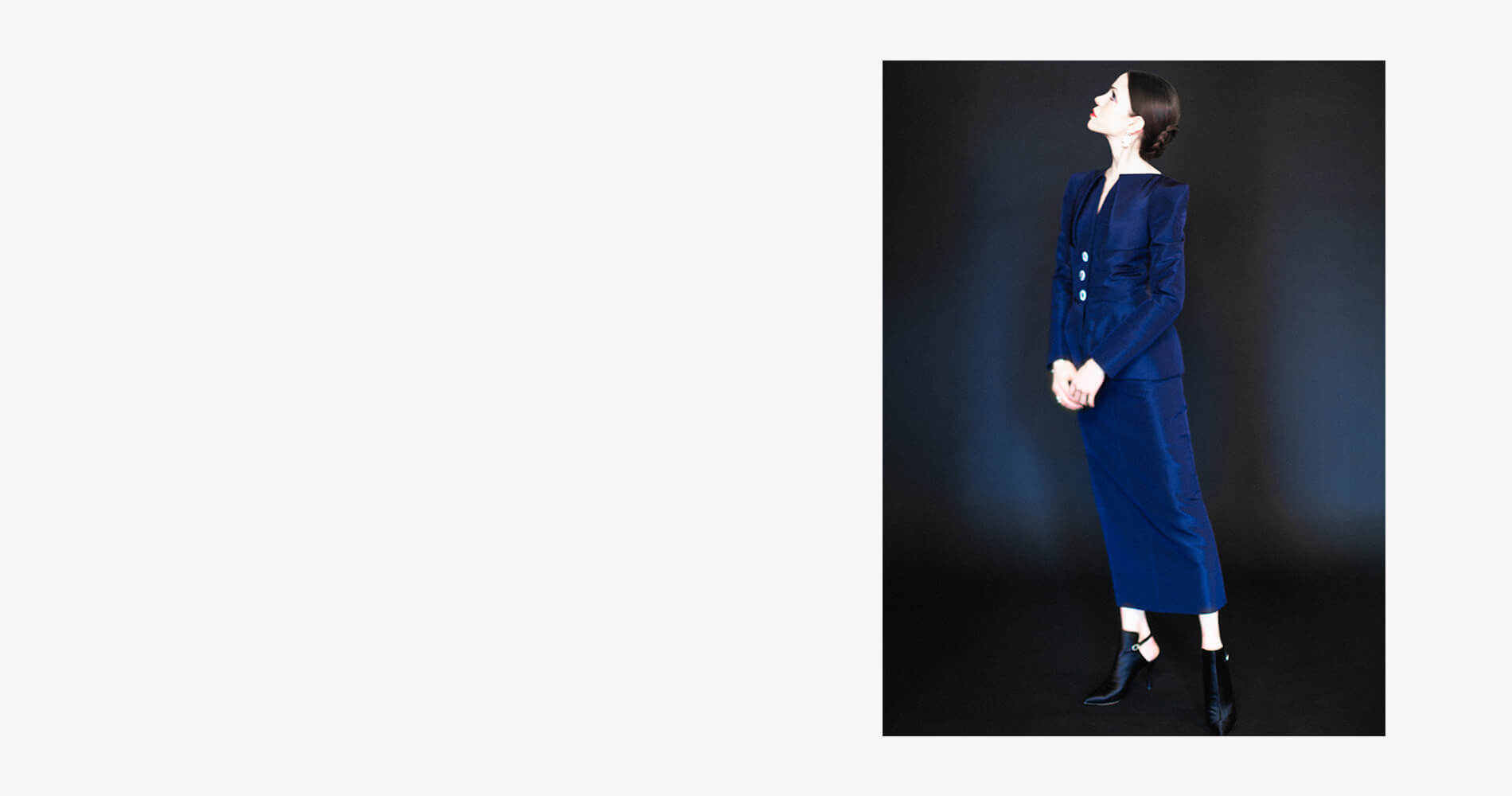+ × are the combination of symbols that appear on the first page of almost all of Hilma af Klint’s notebooks, over 125 of which were left as part of her artistic estate along with more than 1,000 works. An order and a prohibition were the guiding principles inseparable to the lifetime of magical output that mark the legacy of both Hilma af Klint and Karl Lagerfeld. The former prophecy af Klint held for her experimental endeavors just manifested in full with her revelationary exhibition Hilma af Klint: Paintings for the Future within Frank Loyd Wright’s Temple for the Spirit, the Guggenheim.
Divination. The birth of abstraction began with a message. In 1896 at the age of 34, af Klint and her girlfriends began an independent circle of spiritualism, prayer, meditation and séances to make contact with guides or High Masters. They called themselves De Fem (The Five). Over the next 10 years De Fem would document their experiences and make automatic drawings during their spiritual sessions. All the while Hilma, who had a studio at the center of Stockholm’s art scene, would continue her more naturalistic landscape and portrait paintings, work as an illustrator and embark on trips throughout Europe to study the masters. During a séance with De Fem in 1906 af Klint would receive from the spirit guides her “great commission” to present a message through the act of painting. Af Klint underwent 10 months of purification, adopting a vegetarian diet to prepare for the monumental task ahead. The Paintings for the Temple commenced, marking a new wildly abstract style and unprecedented break from figuration. Years would pass before Kandinsky and Mondrian would take their first foray into non-objectivity. Although the two would publish treatises and exhibit widely, The Paintings for the Temple, comprised of 193 works made over 9 years, would remain largely unseen.
Intuition. Sensing the world was not yet ready to receive what she had created, af Klint stipulated her work should not be shown for 20 years after her death. She meticulously reworked, organized and expanded upon her notes and documentation to ensure accessibility to future audiences. Within af Klint’s notebooks an architecture to support her holistic vision is revealed, a design for a temple with a “certain power and calm,” a circular four-story building connected by a spiral circulation for one to receive her messaging.
Invention. In 1947, 3 years after af Klint had passed away the would-be king of fashion, a 14 year old Karl Lagerfeld moved from Hamburg to Paris. A maverick and master interpreter of the future moment, Lagerfeld’s ascent to the throne was a self-fulfilling prophecy. An order and a prohibition. A true non-comformist with a voracious appetite for knowledge, said this, “I know everything, I forget everything, I do what I want.” And so he did. Lagerfeld became one of the first freelancers in the modern fashion industry and in 1983 he joined Chanel, taking the timeless invention of it’s namesake icon, the two-piece suit, and reinvented it flawlessly time and again. If Karl was the King, Coco was his queen, his ability to merge the past with a psychic propensity to forecast and deliver collections as cosms painted dream worlds that symbolized fashion as a cultural experience while portraying its most potent power, the potential to reimagine one’s self.
Transformation. Lagerfeld’s designs were revealed to him while he slept, “The best things I’ve done have come from my dreams. I don’t know who did them.” His vitality as a designer can not be understated, designing up to 10 collections per year for Chanel alone, as observed, fluidly sketching each look himself by hand. As other designers wilted under the pressure to produce, in 2002 Lagerfeld conceived of an additional collection to be shown annually, Chanel’s Métiers d’Art, highlighting the beloved artisans inseparable to the heart of Chanel’s highest creations, Haute Couture. To be tactile now, perhaps is a humanity’s greatest pleasure. To connect the hand to the spirit and to cast that creation upon the world is a form of pure optimism coming from Hilma and Karl, who are The Swan. To preserve the medium and prepare the message to release at a point of cosmic relevance is the spiral of enduring interest, The Dove.
In loving memory of Karl Lagerfeld
Chanel Haute Couture Spring 2019 Collection
Hilma af Klint, Paintings for the Future, Guggenheim Museum
Chanel Makeup by Tomomi Sano, Hair by Evanie Frausto, Photographs by Tylor Hóu
